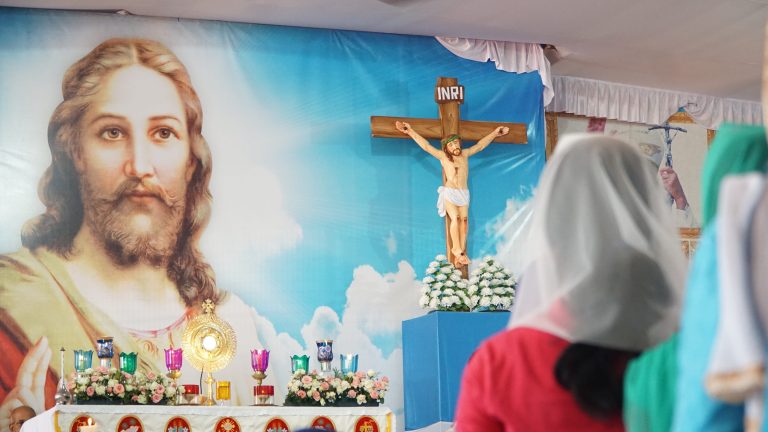Evangelizing is for Rural America, Too
The second in our “Starting Conversations” series. Feel free to share with your parish staff, community, small group, or some friends for some dialogue on evangelization topics that don’t get as much air time as they should.
One problem I tend to see with the processes available to parishes that wish to become evangelizing parishes is that there is a presumption that the parishes are sizable and urban or suburban. How can I tell? The examples used in the books are explicitly urban/suburban. Even if that isn’t mentioned, I rarely hear of clustered parishes sharing a pastor (I think Fr. Mallon’s Beyond the Parish was the only book I read that even mentioned the phenomenon), and the resources tend to presume there is significant lay staffing within the parish (a mark of some size and wealth).
Yet the baptismal call to evangelize holds true everywhere there are human beings. One in five Americans live in rural America—not a small number. My own diocese is largely rural, and I grew up in a rural parish in another state. In the spirit of “starting conversations,” what are we not talking about within the call to evangelize within rural America? And where are the opportunities for evangelization in Catholic rural life?
A few observations for consideration.
- Most rural parishes have their roots in a mission that is still felt. For example, I grew up in a rural parish that was actually a mission parish, run by an order. Even if many rural parishes were established by diocesan priests, parish churches were often established in circumstances that were challenging and desperate. I just finished reading a short history of a local parish on the prairie near me, and the physical hardships of the first years for the people in this land, combined with the complex relationship between Native peoples and European immigrants, made for a true mission to bring Christ’s love and peace to those in need. Rural parishes tend to have longer memories of these original realities, and if that helps a rural parish engage in its eternal mission, that memory is a great good.
- Most rural parishes are clustered. The circuit riders are back in the Catholic Church, with parishes served by a single priest…and usually very little staff. While this is a great challenge, the opportunity here is that evangelization absolutely needs to become the work of the whole people of God, all the baptized. Communities cannot rely on a “this is his job” mentality. But it requires a lay-focused evangelization method that does not require top-heavy staffing initiatives.
- Most rural areas are losing people to the cities. Depopulation is an issue, and often adult children move away for work. However, the evangelization can be re-oriented toward family. Parents seeking to draw back their “none” adult children is an important evangelization initiative that rural parishes could do well. Dwindling but stable Catholic populations could also reorient their evangelism toward other communities and countries.
- In many rural areas, life rotates around planting and the harvest. This impacts evangelization in significant ways, especially extended programs or processes. Most parishes across the nation are at their busiest in Spring and Fall. Most rural parishes have to refocus for opportunities in winter and summer, and may need shorter programming rather than longer.
- Rural America has a spirituality connected to the land. How does our relationship to the land inform our relationship to God? This is a no-brainer for many rural Christians, who see the two relationships as intrinsically connected. But how does it fold into evangelism? A conservative Catholic friend lives in a beautiful rural town that is a bit of an artist’s enclave and very secular/liberal. I asked how they got along, and he said, “Great! Everyone here is joined by a deep love of the land. It is the starting point of every meaningful conversation–I share lots of God talk here, and people listen.”
- Rural America is learning a new language: Spanish. And with the new language, learning about people with a new culture. Immigration from Mexico on south is common throughout the United States, but rural America perhaps sees it more obviously than our melting pot cities. Missionaries often learn a new language and culture when sent abroad. Is rural America willing to learn a new language and culture without leaving home?
- Rural America stays put and has long relationships. Most urban and suburban areas are full of people who move in and out regularly, so there is real flux in the communities. Not so with rural America. These communities have known each other for generations. While there are always challenges with such familiarity, there are also gifts. Relational ministry and evangelization was created for communities like these.
As we pray through how to become a nation of evangelizing parishes, rural America deserves attention. Their challenges are real and different from the rest of the United States, but they also have a powerful history to draw upon and real opportunities for missionary discipleship. Often it just takes some creative thinking. I think of my friend Deb McManimon, who was inspired by St. Paul Street Evangelization’s work in Detroit but lives in a small midwestern town surrounded by farms. She found a way to start: take street evangelization to the farmer’s market and county fair! She goes other places as well but these opportunities are truly just in front of us.
If you are in a rural parish, which gifts do you see in place for your call to evangelization?






